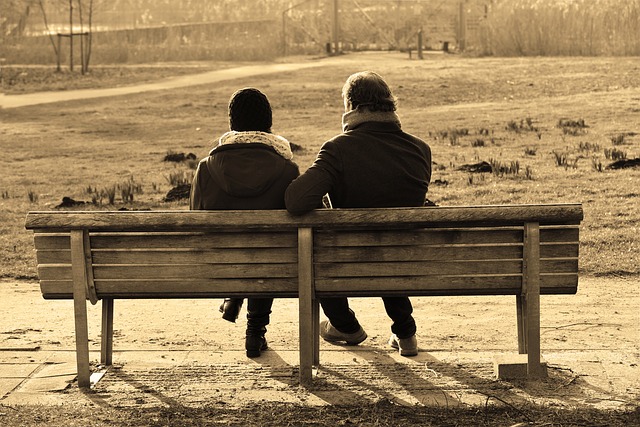The core resource that I have used to understand and practise trauma-sensitive mindfulness is the work of David Treleaven. David experienced trauma as a child and was a committed to mindfulness meditation practice which he found to be essential for healing trauma, but of itself insufficient. His own clinical practice as a psychotherapist working with trauma sufferers confirmed this view of the essential nature of mindfulness meditation but its insufficiency in healing trauma sufferers. David has dedicated his life’s work to researching and educating others about the relationship between mindfulness meditation and trauma. This has culminated in his book, Trauma-Sensitive Mindfulness: Practices for Safe and Transformative Healing and a website with additional resources.
The potential for harm to trauma sufferers during mindfulness meditation
In his book and a free webinar on The Truth About Mindfulness and Trauma, David explains that a lack of understanding by mindfulness trainers of the relationship between trauma and mindfulness meditation can result in overwhelm for a current or former trauma sufferer. This overwhelm can be manifested in heightened anxiety, dissociation, or emotional dysregulation – the inability to control emotions elicited by a trauma stimulus. Harm to the trauma sufferer by a meditation teacher can be exacerbated by a lack of understanding of trauma and perpetuation of the myths surrounding mindfulness meditation. Typical responses that show this lack of understanding and sensitivity are statements like, “Stick with it” (by implication, “if you persist, your trauma response will go away”) or “Most people find this meditation relaxing and calming” (by implication, “there must be something wrong with you”).
The difficulty is compounded by the incidence of trauma and related adverse childhood experiences (ACE). One study of 17,000 members of an integrated health fund found that two thirds had experienced an adverse childhood experience and 20% had experienced more than three such events. There is now an ACE instrument whereby people can identify the number and type of ACE’s they have experienced in a lifetime. David mentions other research that indicates that everyone will have at least one traumatic experience in their lifetime. He goes on to say that the implication of this is that in any room of people practising mindfulness meditation, there will more likely be at least one person suffering trauma. Johann Hari, author of Lost Connections, identifies disconnection from childhood trauma as one of the seven social causes of the pervasiveness of depression in society today.
The three myths about mindfulness meditation and trauma
In the 60-minute webinar on his website, David identifies three myths about mindfulness meditation that have been perpetuated in the popular press and in mindfulness training. The three myths are as follows
- The Panacea Myth – the belief that mindfulness meditation will heal all kinds of stress, even stress generated by trauma. David’s own experience and his clinical experience working with trauma sufferers reinforces the fact that mindfulness meditation alone will not heal trauma – mindfulness meditation processes need to be modified and, in some cases, supplemented by other methodologies such as professional psychological support.
- The Breath Myth – the belief that breathing is emotionally neutral. David explains that because the respiratory system is biologically proximate to the sympathetic nervous system (responsible for excitation of our “flight/ flight/freeze” response) “close and sustained focus on the breath” can re-traumatise an individual for whom “breath” is a trauma stimulus. He states categorically and importantly that “people have different relationships to breath at different moments”. He encourages the listener to experiment with this throughout the day to confirm that our breathing can be relaxed, tense or emotionally neutral at any point in a day.
- The Sufficiency myth – the belief that mindfulness meditation alone is sufficient to heal trauma. David draws on case examples to illustrate the need for modifications to mindfulness meditation practice and the introduction of additional “self-regulation” tools to enable a person to heal from trauma.
Overall strategies to develop trauma-sensitive mindfulness training practices
David and other authors, practitioners, and researchers provide a range of strategies to “do no harm” when educating others in mindfulness meditation. Here are some key strategies:
- Understand trauma – First and foremost, understand trauma and its components on a biological, psychological, and social level. Without this understanding, it is difficult to develop the sensitivity and flexibility required to do no harm when facilitating a mindfulness meditation session. Associated with this, is the need to understand trauma-sensitive mindfulness and different strategies that can be adopted by mindfulness trainers and educators.
- Provide choice re participation – this can be as basic as the freedom not to participate in any or all mindfulness practices on a particular occasion. It can be the freedom to choose to close your eyes or leave them open (downcast or in wide-ranging exploration) and/or the option to sit, stand, walk or lie down during meditation practice. David points out that choice reinforces a sense of agency and is an important and healing aspect of mental health. He also warns about the potential of offering too much choice in one session which can result in stress for participants, particularly those who already experiencing anxiety (David learned this by making this mistake himself in his zeal to provide agency).
- Provide choice of anchors – this is a key area of choice that not only recognises that some anchors can be trauma stimuli for some individuals but also that anchors in meditation are an area of personal preference (what works for one person does not work for another). Anchors enable meditators to restore their focus when they have been diverted by a distracting thought and/or emotion.
- Adopt modifications to mindfulness meditation practices when needed – In the webinar mentioned about, David provides examples of how he has been able to offer modifications to mindfulness meditation practices for particular individuals when working one-to-one, including allowing brief breaks to walk around, suggesting a shift in posture and encouraging the use of deep breathing at different intervals or at appropriate moments. Sam Himelstein, who works with traumatised teenagers, has found, for example, that where a teenager cannot talk about, or focus on their feelings about, their traumatic experience, listening to appropriate music together can be relationship building and enable progress to be made in healing teenage trauma.
- Develop awareness of principles, guidelines and practices for trauma-sensitive mindfulness – David provides a comprehensive, two-part, online program for training mindfulness practitioners in trauma-sensitive mindfulness. He also provides a free Trauma-Sensitive Mindfulness Podcast featuring people such as Liz Stanley on Widening the Window of Tolerance and Sharon Salzberg on Loving-Kindness Meditation. Sam Himelstein, author of Trauma-Informed Mindfulness With Teens, offers both guidelines and principles to enable mindfulness trainers and educators to develop the awareness and sensitivity to work with people who have experienced trauma.
Reflection
Reading about the research on Adverse Childhood Experiences and trauma-sensitive mindfulness made me realise that I had suffered multiple traumas as a child and that my five-years’ experience in daily mindfulness meditation and Gregorian chant as a contemplative monk in the late 1960’s had helped me to heal from these traumas.
Recently, I had two participants out of a group of 20 in a management training program who openly stated at the beginning of the program that they suffered from chronic anxiety – one of whom experienced trauma as a result of their manager shouting at them and abusing them in public. This facilitation experience confirmed the need to modify the training program and also led me to further explore anxiety through Scott Stossel’s book, My Age of Anxiety: Fear, Hope and Dread and the Search for Peace of Mind. This book helped me to become more aware of the pervasiveness of trauma-induced anxiety across the world, intensified by the global pandemic, and how such anxiety can pervade every aspect of an individual’s life.
I have also witnessed two situations of emotional dysregulation during training courses when individuals have experienced a trauma stimulus – one during a singing course when a person experienced acoustic trauma and another where someone experienced re-traumatisation during observation of a success posture exercise being undertaken by another individual with the guidance of a workshop facilitator.
As we grow in mindfulness through meditation, reflection and research, we can become more self-aware, develop insight and sensitivity to work with people who are experiencing trauma and anxiety and build the flexibility and confidence to adopt mindfulness practices and approaches that are more trauma-sensitive.
________________________________________
Image by Maria Karysheva from Pixabay
By Ron Passfield – Copyright (Creative Commons license, Attribution–Non Commercial–No Derivatives)
Disclosure: If you purchase a product through this site, I may earn a commission which will help to pay for the site, the associated Meetup group and the resources to support the blog.










